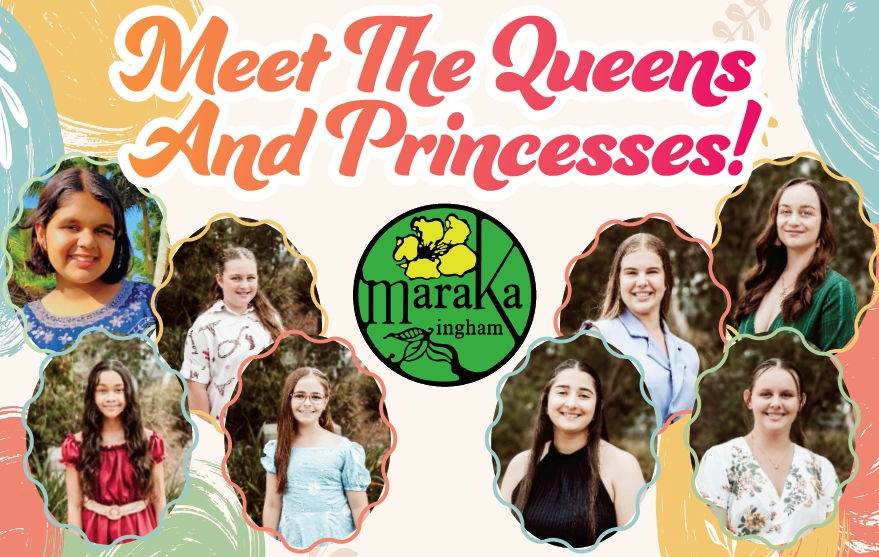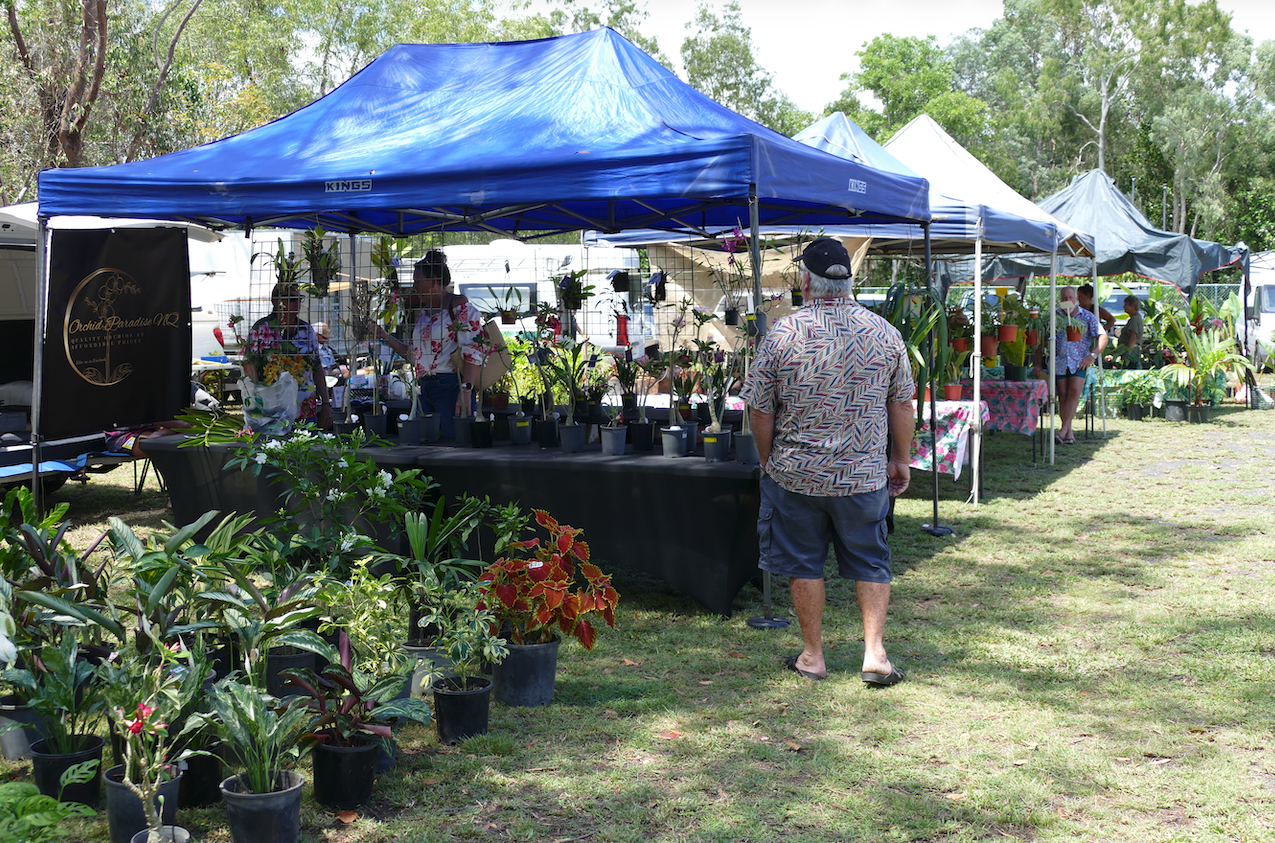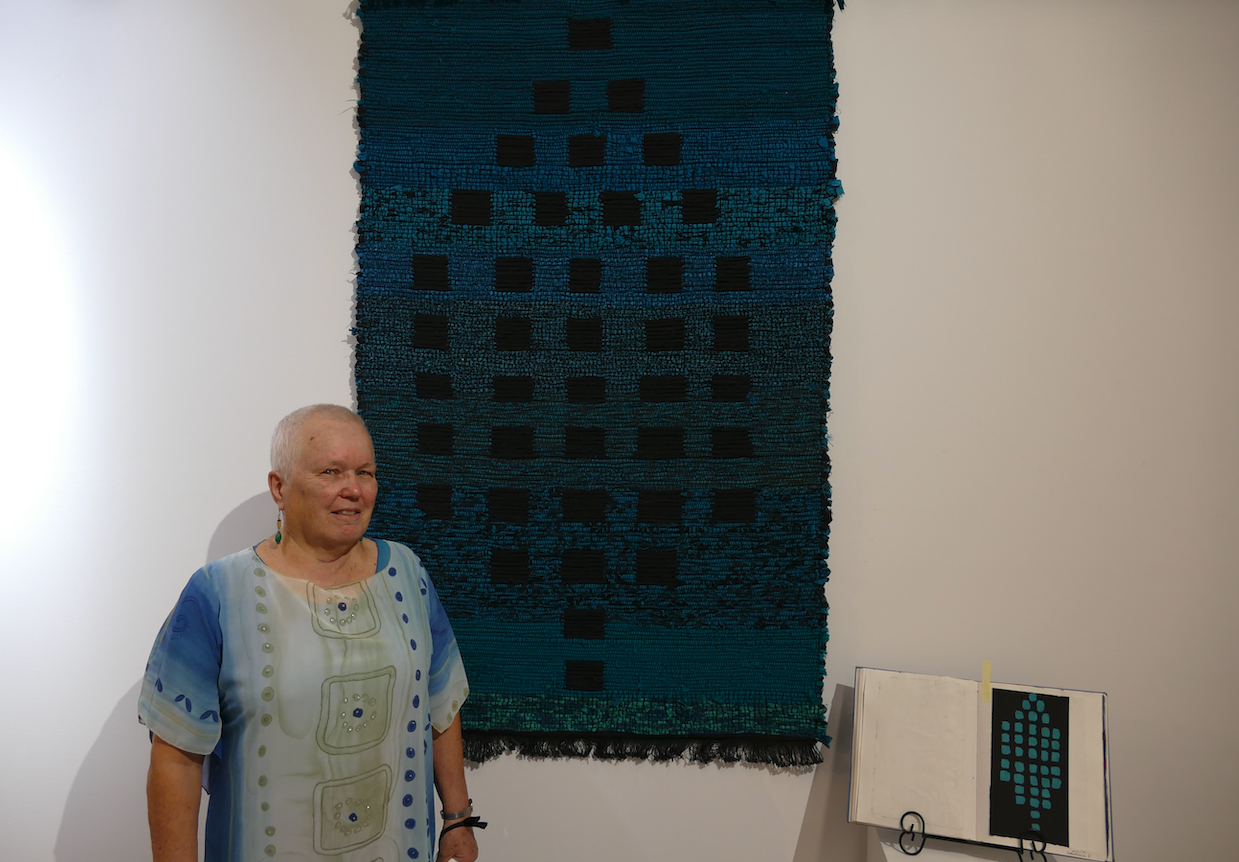
Are they not the most gorgeously beautiful and courageous ladies you have seen? Taking that step out into the Maraka spotlight are our wonderful Queens and Princesses, each putting themselves out there for the chance to claim the crown. You’ll get to meet them at the Wine and Cheese Night, the Afternoon Tea, Kids Big Day Out, and Aquathon, all before Hinchinbrook comes together for the ultimate display of regional pride at the Maraka Festival Mardi Gras Parade and Crowning. Mark your calendars as October runs Maraka royal green, floats and fireworks are just the tip of the festival iceberg!
Read the full story
Are they not the most gorgeously beautiful and courageous ladies you have seen? Taking that step out into the Maraka spotlight are our wonderful Queens and Princesses, each putting themselves out there for the chance to claim the crown. You’ll get to meet them at the Wine and Cheese Night, the Afternoon Tea, Kids Big Day Out, and Aquathon, all before Hinchinbrook comes together for the ultimate display of regional pride at the Maraka Festival Mardi Gras Parade and Crowning. Mark your calendars as October runs Maraka royal green, floats and fireworks are just the tip of the festival iceberg!
Read the full story
On Saturday 11 October, the Cardwell Coastguard hosted its annual Tropical Plant Expo, drawing plant lovers from near and far. The event featured an impressive range of plants for both display and sale, with many local sellers showcasing exceptional specimens. Visitors enjoyed browsing the stalls, chatting with growers, and picking up new additions for their gardens. Alongside the plants were home-grown fruit and vegetables, a delightful selection of prize-winning homemade jams, and beautiful artworks by Mandy. No Coastguard event would be complete without the classic BBQ, complemented by coffee and cake. It was a wonderful day enjoyed by all who attended.
Read the full story
TYTO Regional Art Gallery is currently home to two thought-provoking exhibitions, each exploring the world around and beyond, through entirely different lenses. In the main gallery, Flies and Weevils and Cockroaches by Lorraine Lamothe invites visitors to see beauty where they might least expect it. At 75, Lorraine found herself yearning to reconnect with her creativity after a quiet spell. “I thought, well, that’s it, I’ve got to put myself out there again and see what can happen,” she said. When Tyto confirmed her exhibition, she recalls thinking, “You’re not done yet, girl. You’re not done yet.” That moment reignited her passion for creating work that not only excites but also makes people think. Her collection of sculptural insects and woven displays celebrates the misunderstood creatures most people prefer to avoid. “I chose insects that are really disliked,” Lorraine explained. “People need to understand that they’re not all bad. They break down decaying plant material and help the environment. Let’s not be prejudiced about these insects, let’s find joy in them.” Across the way, in the Niche Gallery, artist Ashleigh Jane takes visitors into the realm of myth and legend with Mythical Beasts. Her intricate illustrations breathe new life into creatures drawn from global folklore, from Egyptian hybrids to celestial goddesses. “I’ve always been fascinated by mythology and folklore,” she said. “I wanted to delve a little deeper and rediscover stories that lurk in the darkness, the ones people might not know.” Ashleigh’s exhibition features works from her upcoming second book. Each piece is both a visual story and a modern reimagining of ancient tales. “My favourite story is about Doddle, a rain goddess who milks her heavenly cows to make it rain,” she shared. “But my favourite drawing is the Ikenty, a bird with a cat’s head found in Egyptian hieroglyphs. No one really knows what it was for, but I loved bringing it to life.” Together, these two exhibitions celebrate the power of curiosity, whether it’s found in the smallest of creatures or the myths that have shaped cultures for centuries. Both artists remind us that inspiration can be rediscovered at any stage of life, and that beauty often hides in the unexpected.
Read the full story
Gilroy Santa Maria College is the result of the 1984 merger of two secondary Catholic schools established in the Ingham district in 1949: Santa Maria High School, a girls’ school administered by the Sisters of Mercy, and Cardinal Gilroy College, a boys’ school administered by the Christian Brothers.
The origins of the schools trace back to 1945, when Fr John Garvey purchased the Roscommon Estate on behalf of the Diocese of Townsville. Fr David O’Meara was appointed Parish Priest and entrusted with establishing a school on the estate. That same year, plans for a Christian Brothers’ school for boys were first recorded.
By 1948, Fr O’Meara had become the eighth Parish Priest of Ingham and advanced projects initiated by Fr Garvey, including the construction of classrooms and a chapel for Cardinal Gilroy College. Santa Maria College officially opened in the convent school complex the following year, providing education for girls under Mother Dympna, who was recognised as the foundress.
Cardinal Gilroy College opened on 1 February 1949, covering Grades 3 to Junior Standard. The first Christian Brothers’ community, led by Brother Ephren Cryan, lived temporarily in a local house until a purpose-built residence was ready. Both schools held their official blessing and opening ceremonies on 26 June 1949, with over 1,000 people attending.
The College was named in honour of Australia’s first cardinal, while the chapel was dedicated to Our Lady of Fatima, with Blessed Martin de Porres as secondary patron.
Through the 1950s and 1960s, the schools expanded steadily. In 1957, Pius X Parish was created in East Ingham, with Gilroy Chapel serving as its Mass centre. New residences, classroom reorganisations, and the appointment of successive principals ensured that both colleges could meet the growing educational needs of the district. The first joint graduation with Santa Maria students took place in 1965, and in 1968, a new building and science block at Gilroy was officially blessed, marking further progress in the provision of modern facilities.
By 1972, Santa Maria High School was relocated to the Gilroy grounds, consolidating the campuses and enhancing access to science and library resources.
The 1970s and early 1980s saw continued development. Silver Jubilee celebrations for both schools were held in 1974, featuring alumni reunions, combined Masses, and community festivities. New facilities, including a library, Manual Arts block, and administrative offices, were progressively added between 1975 and 1982. During this period, the schools also began integrating their finances, co-educational classes, and administrative systems, laying the groundwork for the eventual merger.
The merger in 1984 formally created Gilroy Santa Maria College, uniting the traditions, resources, and communities of the two schools. The first Year 11 class commenced in 1986, with the opening and blessing of the Year 11 and 12 extensions conducted by Bishop Raymond Benjamin, assisted by Senator Margaret Reynolds. The first Year 12 cohort graduated in 1987, marking the full establishment of senior secondary education at the College.
Subsequent decades saw the introduction of Open Days, a Student Representative Council, and major building developments, including refurbished classrooms, the All-Purpose Hall in 2002, and a newly refurbished chapel in 2009, coinciding with the College’s 60th Jubilee.
Gilroy Santa Maria College honours the heritage of its founding schools through its mottos and colours. The Sisters of Mercy motto, Sub Tuum Praesidium (“under your protection”), and the Christian Brothers’ motto, Facere et Docere (“to do and to teach”), continue to guide the College’s values.
The College colours of royal blue and gold reflect the heritage of the original schools: blue symbolises Our Lady under her title of Stella Maris (“Star of the Sea”), while gold represents light, echoing the mission to enhance the light of Christ in every person.